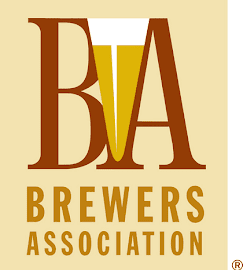I've seen the beer press describe Lagunitas Brewing's tasty Undercover Investigation Shut-Down Ale as an
oxymoronic 'Imperial Mild'
Hmm. Why? What is a Mild ale?
The US Beer Judge Certification Program (BJCP) defines Mild as:
Appearance: Copper to dark brown or mahogany color. <...>
Flavor: Generally a malty beer, although may have a very wide range of malt- and yeast-based flavors (e.g., malty, sweet, caramel, toffee, toast, nutty, chocolate, coffee, roast, vinous, fruit, licorice, molasses, plum, raisin). Can finish sweet or dry. <...>
Comments: Most are low-gravity session beers in the range 3.1-3.8% <...>
History: May have evolved as one of the elements of early porters.
British beer blogger and author Ron Pattinson disagrees ... sort of.
As discussed before on this blog and others, beer styles are funny things. A discussion of what Mild Ale is might be be more useful if the discussion included when.
Thus, if historical accuracy is to be our guide, in his new book simply entitled Mild!, Pattinson has contradicted the current BJCP description:
[In the 18th century] A further method of classifying malt liquors was their age. Ones sold young were described as Mild. Ones that had been aged were called Keeping or Stale.
<...>None of the beers described as Mild Ale at this time has any but the slightest similarity with modern Mild.

That is, the term Mild has historically been a description of the level of conditioning. It was a procedure, not a style, and it was defiantly not a low alcohol beer.
For most of its history Mild wasn't a weak beer. In Victorian times, X Ales [the brewery codes for Mild] were brewed to a wide range of strengths. Even the weak, plain old X, was 1055° [degrees Plato, a measure of brewing sugar present before fermentation] or more. The strongest, XXX or XXXX, had OGs [original gravities, that is, the pre-fermentation sugar levels] as high as 1105°.
Futhermore:
Some writers [e.g., the BJCP, the American Homebrew Association, and Dave Satula in his Brewers Association book Mild Ale] maintain that, rather than disappearing, Porter was transformed into Dark Mild. <...> The theory is bullocks. <...> Dark Mild and Porter existed alongside each other for decades and were brewed from very different grists. I think this torpedoes the Porter becomes Dark Mild theory
Mild Ales became generally darker as the 19th century ended. And their strengths began to gradually decline. Mild's final, unkind, switch to very low alcohol dark beers (with some exceptions) occurred due to the deprivations (including taxes) of World War I and the Great Depression.
Gravity cuts and cost increases. War, as they say, is hell.
Myths about beer abound, achieving imprimatur through repetition and publication. In his Mild! —rather than being complicit— Ron Pattinson has researched the original brewing records of the breweries that were actually brewing Mild Ales. Assembled from posts that originally appeared at his blog —Shut Up About Barclay Perkins— this slim book packs a historical wallop.
I don't believe that Pattinson had heard of Undercover Investigation Shut-Down Ale (or its description) when he wrote this:
How would I describe one of these strong Milds? Obvious if you think about it: Imperial Mild. I'm sure that will go down well in the US.
Me, I'm holding out for an Imperial Session beer: a very strong, —yet only 3.8% alcohol by volume— freshly casked mild. That would be droll.
Mild!











Ron has been doing great research on this subject for years. He bases a lot of his opinion in historical brewing records. What's been missing, and I'm curios if it is addressed in this book, is the data regarding attenuation. Good stuff!
ReplyDeleteWe're pouring Imperial Helles and Imperial Marzen at the house.
Cheers, Rick
Rick, if you mean the apparent attenuation, yes there is information about that for many of the beers.
ReplyDeleteBTW, I completely revamped "Mild!" last week and added another 30 pages. The new version is now avaiable for sale.